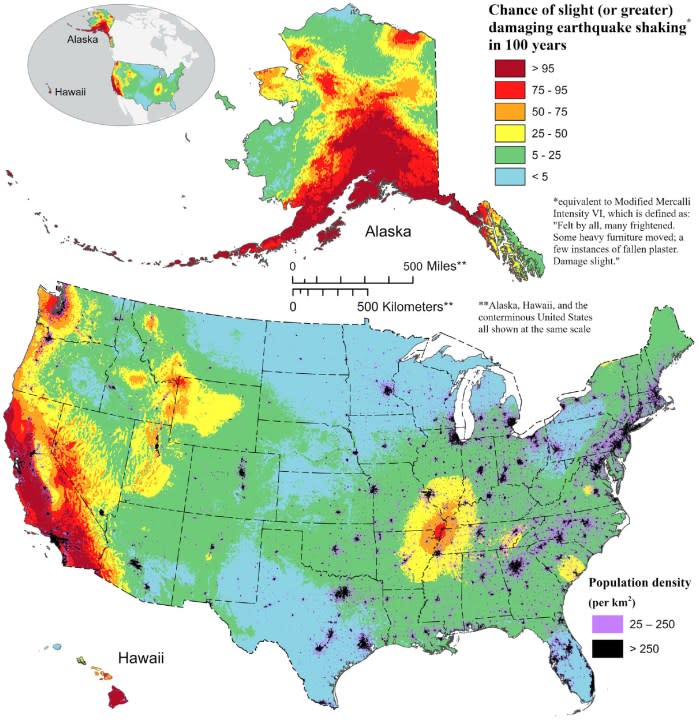Noticeable earthquakes more likely to occur in Portland than previously thought

PORTLAND, Ore. (KOIN) — Portland is twice as likely to experience an earthquake strong enough to be felt by humans than scientists previously thought, a new study published by the U.S. Geological Survey shows.
The revelation was made possible by a team of scientists who mapped out a more thorough model of the crustal faults located within 50 to 75 miles of Portland. Portland State University earthquake geologist Ashley Streig and her graduate students conducted the research that contributed to the USGS’s “2023 Update of the U.S. National Seismic Hazard Model,” which, among other things, documents this new understanding of the region’s fault capabilities.
“These earthquakes are like the 1993 Scott Mills earthquake, and would be devastating if [they] were to occur on the Portland Hills fault or Gales Creek fault today,” Streig said.
PPS to parents: Online learning for now at storm-damaged schools
The crustal faults located near the Portland area could produce a quake as powerful as a 7.2, Streig said. However, an earthquake of this size is unlikely in the near future. These faults are estimated to have a 2% chance of producing shaking strong enough to be felt by humans within the next 50 years.
“It is still low, but not zero,” Streig said. “Importantly, we should include these crustal fault earthquakes in our discussion of earthquake hazard and our preparations.”
University of Oregon Associate Professor Valerie Sahakian said that the faults documented in the USGS report were previously understudied. With a better understanding of these faults, scientists can more accurately predict the level of shaking they can generate.
“Strong shaking happens when we have big earthquakes, when we are closer to earthquakes, or if something about the ground and geology makes shaking stronger,” Sahakian said. “In this case, it appears that the difference in the new National Seismic Hazard Model is that site effects (how local geology impacts shaking) are greater in Portland, because we are starting to better characterize that geology, and the sedimentary basin there.”
The sediments and basin near Portland are also expected to increase this shaking, the report states. According to the report, the local geology also has a larger impact on intensifying shaking than previously thought.
“[Sedimentary basins] will make the long period shaking stronger – i.e., the longer rolling waves not the high-frequency waves,” Sahakian said. “That means that shaking will be stronger and of greater consequence for buildings and structures (bridges, taller buildings/structures, etc.) that respond to [longer periods of shaking].”

While the report provides better insight into Portland’s seismic capabilities, it also gave insight into the devastating subduction zone quakes possible on the Oregon Coast. According to the report, the Oregon coast has a 50 to 75% chance of experiencing a damaging earthquake in the next 100 years. Friday, Jan. 26 will be the 324th anniversary of the most recent Cascadia earthquake, which produced an estimated 8.7 to 9.2-magnitude earthquake.
For the latest news, weather, sports, and streaming video, head to KOIN.com.

